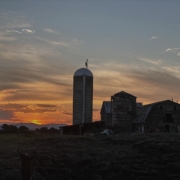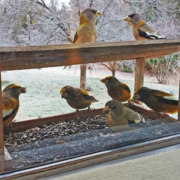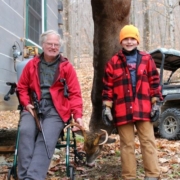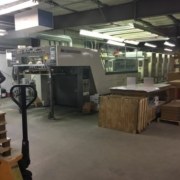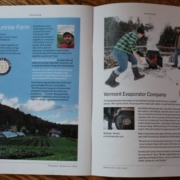The Newton Farm
As we work on this project, we’re constantly reminded of what a small state Vermont is — small in the very best way. An example of this involves the cover image. We chose the Susan Abbott painting because we thought it captured rural Vermont. Shortly after releasing the image to the public, we got this letter, validating our choice:
Just want to say “Wow!” to the cover choice for the Almanac. Susan Abbott’s painting captures the perfect blend of Vermont imagery, somehow incorporating the state’s flat-rolling-mountainous qualities in the same image; the sense of rural life that goes on and on despite everything; the typicalness of the barn and older vehicle, the road and dooryard; the wide view of milky, lovely skies.
We also got letters — almost immediately — from three people in the extended Newton family who said: “hey, that’s our farm!”
I asked Denise Newton to tell me a little more about the place, and she wrote;
This farm has been in our family since the 1940’s. We are a third generation dairy farm. We sold our herd because of the economy in Spring of 2019. My husband Stephen dedicated his many 41+ years to this farm. Our four children, Amy, Shannon, Todd, and Lindsey are very proud of their hard working family and have put in many hours, as I did, to support this farm and will always call this place home. Stephen and I have diversified the farm and raise pigs, turkeys and a few cattle. It’s sits on 70 acres in Marshfield with a beautiful view of Camel’s Hump with great sunrises and sunset, also with an 18 acre sugarbush. It’s truly our little place called paradise. The truck in the picture is Stephens and the round bales are from his harvest.
The photo at the top shows one of those lovely sunsets.

